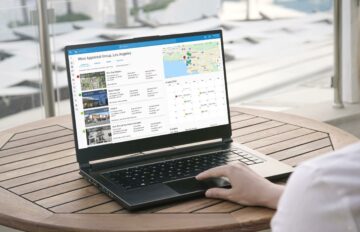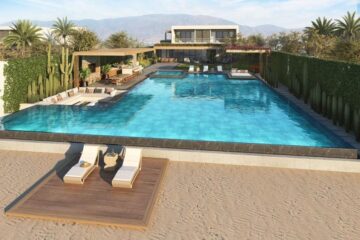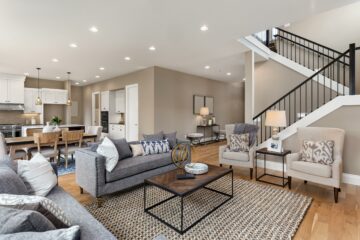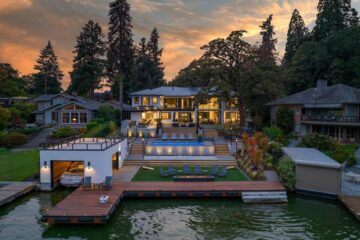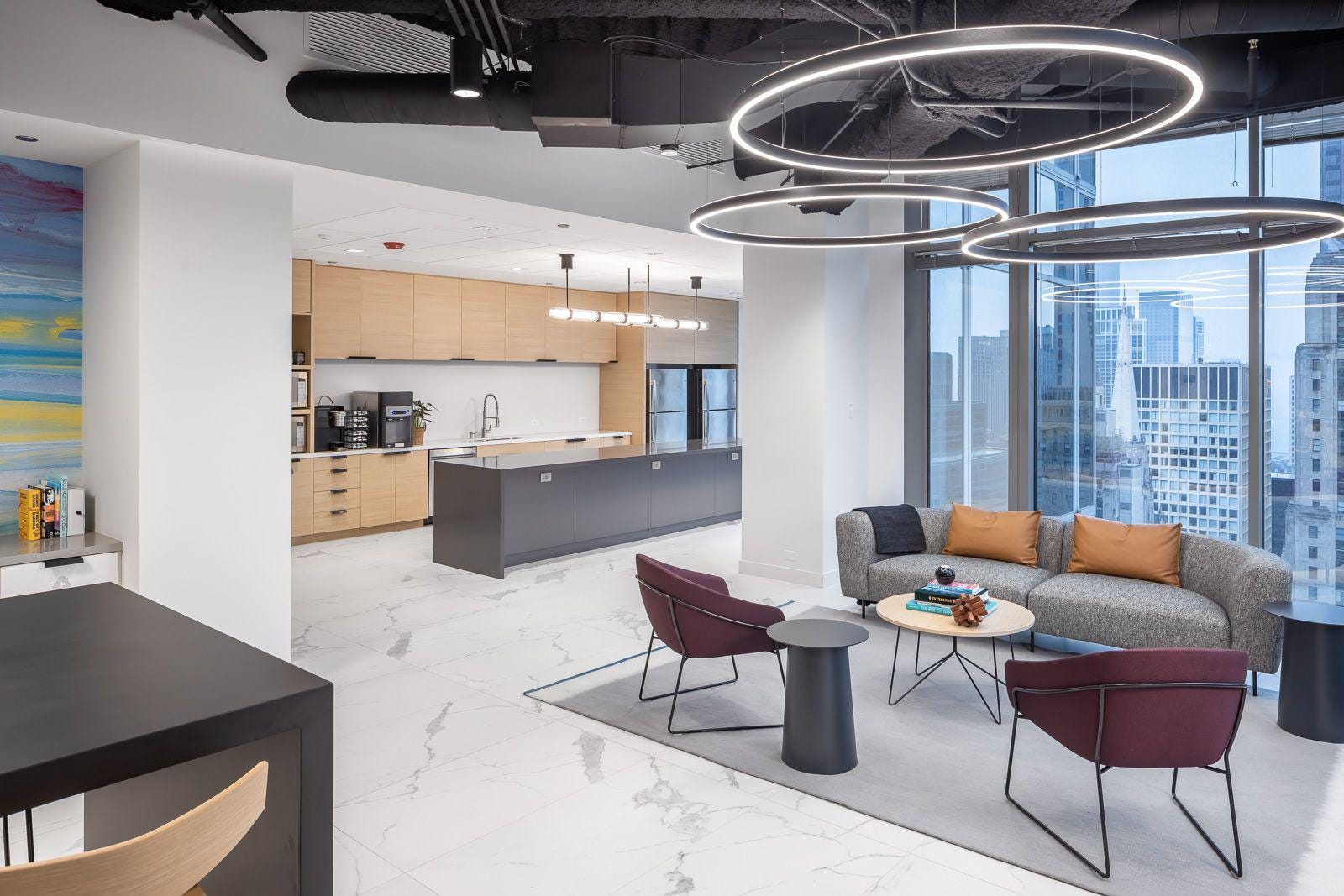
As it continues rapidly evolving, the modern American office increasingly defies easy categorization. On one hand, we hear remote work is here to stay. On the other hand comes word office occupancy continues to climb. On one side of the issue are pundits arguing remote work is essential to employees’ mental health. On the other side are those observing that without regular in-person exposure to offices and colleagues, mentoring and collaboration are as yesterday as an IBM Selectric.
At times like these it seems logical to consult the experts who make workplace design their daily bread and butter. What follows is a small sampling of 2023 office design trend forecasts from some of the leading lights in the field.
Sensory experiences
Next month, it will be three years since the emergence of the Covid-19 health crisis. Especially early in that era, as office workers sheltered in place at home, they adopted new routines. They may have gone for a walk after lunch or chosen a comfortable armchair from which to participate in a Zoom-enabled employee meeting. These are sensory experiences, which one expert says will reunite employees in the 2023 office.
“Designing office space to support these routines will play an essential role in welcoming employees back to the office,” predicts Kendra Linton, senior associate, interior designer with Minneapolis, Minn.-based NELSON Worldwide.
“Sensory experiences can be integrated into an office space through materiality, furniture and layouts that are reminiscent of a home. This can be balanced with spaces – such as Zoom rooms – which allow for privacy and adaptability as employees tune the furniture, technology, lighting, etc. in these spaces to fit their needs and support their evolving routines.”
Recreating home
At TPG Architecture, the emphasis has shifted away from corporate or sterile-looking spaces, and toward spaces that recreate the warmth and comfort of a home. Along with this focus has come a desire to provide office workers with design choices, whether huddle rooms for quiet, heads-down work, or spaces to collaborate with colleagues.
“The reality is that technology, for all its benefits, has made everyone readily available to work,” says Michel Fiechter, managing executive and workplace expert, with TPG Architecture, in New York City.
“During the pandemic, we saw just how detrimental being constantly connected could be. We are now beginning to see a shift in focus from ‘work-life balance’ to ‘work-life blend.’ This change reframes how we look at boundaries and choices from the employee’s perspective. Work-life blend through a design lens sees ‘the office’ as a separation tool with spaces that prioritize the kind of comfortability we prefer at home, but in a setting that fosters collaboration and/or concentration.”
Anticipating change
On a daily basis, workplace designers must confront and surmount the hurdles attendant with creating meaningful spaces that propel organizations forward, says Scott Spector, principal with New York City-based Spectorgroup.
Though office design trends can be and often are fleeting, maximizing each space’s longevity is key to meeting the needs of the evolving workplace. “For us, that means offices need to have a level of authenticity and flexibility,” Spector says. “Translating authentic stories and conveying a design concept that highlights and supports an organization’s culture is one of the most effective ways to create an energetic space that inspires and motivates. Looking at 2023 trends, we can expect to design more spaces that are not static but anticipate change and can evolve with an organization.”
High-end interiors
Competing against remote work, and effectively inspiring team members to return to the office, represent daunting challenges faced by the modern organization. To overcome those obstacles, employers will need to unveil high-end interior elements, says Blima Ehrentreu, founder and CEO of The Designers Group, based in Brooklyn, N.Y. Needed are sumptuous lobbies, fully equipped fitness facilities, comfortable and aesthetically pleasing breakout rooms and cafes serving up a broad array of food and beverage options. Equally important, Ehrentreu says, is the fulfillment of all technology needs, from outlets access to surface charging and mobile furniture.
- SEO Powered Content & PR Distribution. Get Amplified Today.
- Platoblockchain. Web3 Metaverse Intelligence. Knowledge Amplified. Access Here.
- Source: https://www.forbes.com/sites/jeffsteele/2023/02/10/workplace-design-experts-put-forth-predictions-for-2023/
- 2023
- a
- access
- adopted
- After
- against
- All
- American
- and
- anticipate
- architecture
- Array
- Associate
- Authentic
- authenticity
- available
- back
- based
- basis
- Beginning
- being
- benefits
- BEVERAGE
- Blend
- boundaries
- Bread
- breakout
- broad
- Brooklyn
- ceo
- challenges
- change
- charging
- choices
- chosen
- City
- climb
- collaborate
- collaboration
- colleagues
- come
- comfort
- comfortable
- concentration
- concept
- connected
- constantly
- continues
- Corporate
- could
- COVID-19
- create
- Creating
- crisis
- Culture
- daily
- Design
- Designer
- designers
- each
- Early
- Effective
- effectively
- elements
- emergence
- emphasis
- Employee
- employees
- employers
- equally
- equipped
- Era
- especially
- essential
- etc
- everyone
- evolve
- evolving
- executive
- expect
- Experiences
- expert
- experts
- Exposure
- faced
- facilities
- field
- fit
- fitness
- Flexibility
- Focus
- follows
- food
- Forbes
- Forward
- founder
- Founder and CEO
- from
- fulfillment
- fully
- Group
- Health
- here
- highlights
- Home
- How
- HTTPS
- Hurdles
- IBM
- important
- in
- increasingly
- inspiring
- integrated
- interior
- issue
- IT
- Key
- Kind
- leading
- Lens
- Level
- Lighting
- logical
- longevity
- Look
- looking
- lunch
- made
- make
- managing
- meaningful
- means
- meeting
- Members
- mental
- Mental health
- mentoring
- Mobile
- Modern
- Month
- more
- most
- Need
- needed
- needs
- New
- New York
- new york city
- obstacles
- occupancy
- Office
- offices
- ONE
- Options
- organization
- organizations
- Other
- Outlets
- Overcome
- pandemic
- participate
- perspective
- Place
- plato
- Plato Data Intelligence
- PlatoData
- Play
- Predictions
- Predicts
- prefer
- Principal
- Prioritize
- privacy
- Propel
- provide
- put
- rapidly
- Reality
- regular
- remote
- remote work
- represent
- return
- Role
- Rooms
- routines
- says
- seems
- sees
- senior
- serving
- setting
- shift
- since
- small
- some
- Space
- spaces
- stay
- Stories
- such
- support
- Supports
- Surface
- team
- Technology
- The
- their
- three
- Through
- times
- to
- tool
- toward
- Trend
- Trends
- us
- warmth
- ways
- welcoming
- What
- whether
- which
- WHO
- will
- without
- Word
- Work
- workers
- Workplace
- worldwide
- years
- zephyrnet
- zoom


